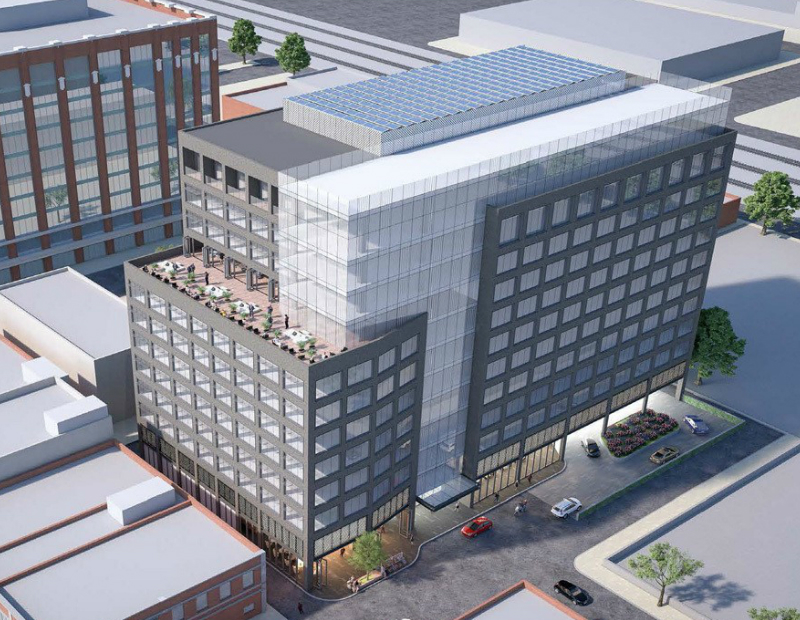Largest US Passive House Office Project Coming to Chicago
Just around the corner from Google’s new Midwest headquarters, the upcoming 12-story building is scheduled for completion in the first quarter of 2020.
By Scott Baltic
Mark Goodman & Associates Inc. is set to build 310 N. Sangamon, the largest office building in the United States to achieve Passive House certification. Located in Chicago’s West Loop around the corner from Google’s new Midwest headquarters, the 12-story building will offer 268,000 square feet of office space and 7,800 square feet of ground-floor retail.
Passive House buildings follow a stringent set of design principles for building systems, insulation and windows to create an air-tight structure, resulting in a reduced environmental footprint. These buildings require little energy for heating or cooling, regardless of the weather.
Mark Goodman, president of Mark Goodman & Associates, noted that the heating and cooling energy savings of Passive House buildings can be significant, up to about 75 percent versus standard buildings, according to the Passive House Institute US (PHIUS). As part of the Passive House standard and best-practice ventilation design, the building will provide filtered, tempered 100 percent outdoor air through a dedicated ventilation system.
310 N. Sangamon is designed by SCB Architects to feature a modern loft building design with office space on floors three to 12 and parking for 47 cars on the second floor. Amenities are expected to include a fitness room, outdoor terrace and bike storage room. The site is three blocks from the Morgan station on the CTA’s Pink and Green lines.
The total project cost is estimated at $115 million, Goodman told Commercial Property Executive. He added that the company expects to break ground in the fourth quarter and to deliver the building for occupancy in the first quarter of 2020.
More about the Passive House standard
Passive House was originally applied mostly to single-family homes, Mike Knezovich, a PHIUS spokesperson, told CPE. “The segment that has grown the fastest in the past few years is multifamily, particularly in the affordable housing segment. Commercial is coming on now, and where the next spurt is happening.”
As more manufacturers have entered the market for passive building components, he continued, “the cost premium for these buildings has shrunk,” down from 3 or 5 percent to, sometimes, no premium.
In comparison to LEED certification, Knezovich explained, Passive House looks specifically at a building’s energy performance, while LEED takes into account factors such as proximity to public transportation. That said, he added that the two standards “are not in the least mutually exclusive, and there is some overlap. A building that meets PHIUS+ Certification standards earns a certain amount of LEED points. They can go hand in hand.”
Last fall, the Pennsylvania Housing Finance Agency began to undertake an $18 million expansion of its headquarters, in Harrisburg, Pa., with the goal of earning both Passive House and LEED Platinum certifications for the project.
Image courtesy of SCB Architects








You must be logged in to post a comment.